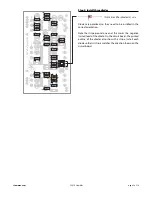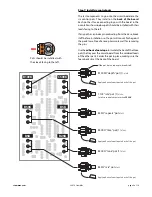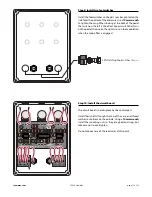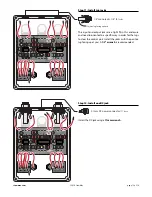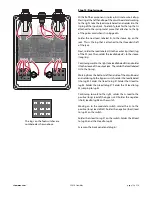
Tips for soldering
The solder joints you’ll make on the
circuit board are very small, and too
much heat can damage the board.
The idea is to make joints quickly,
without scorching the eyelets.
Hold components in place for soldering by threading the
leads through the board and bending them apart on the
reverse side.
Make your solder joints on the reverse side. Insert the tip into
the eyelet and let it heat for 4-5 seconds before touching it
with solder. This heats the contact enough for the solder to
flow nicely without damage. You don’t need much solder,
just enough to fill the eyelet. After soldering, trim away the
excess lead wire.
Give your pedal a custom paint job!
Any paint sold for use on metal will work well on the kit case.
Spray paints like Rustoleum® or Krylon® are a durable finish.
You might want to paint the case before building the kit,
so you won’t need to take the parts back out for painting.
A way to add custom graphics is to print them from your
computer onto waterslide decal paper. If you use decals,
protect them from scratches by spraying clear topcoats
over them.
Tools and supplies
Required:
Soldering iron with fine point tip
Solder
Wire cutter/stripper
3/8" nut driver or socket
1/2" nut driver or socket
10mm nut driver or socket
11mm nut driver or socket
14mm wrench
#1 Phillips screwdriver
Also helpful: Clear silicone adhesive
Circuit card holder
Magnifying glass or OptiVISOR
StewMac Soldering Aids
Power:
This pedal requires a standard 9V DC
center-negative power supply (not
included) and consumes less than 100mA.
There’s no battery option.
stewmac.com
©2018 StewMac
page 2 of 14





